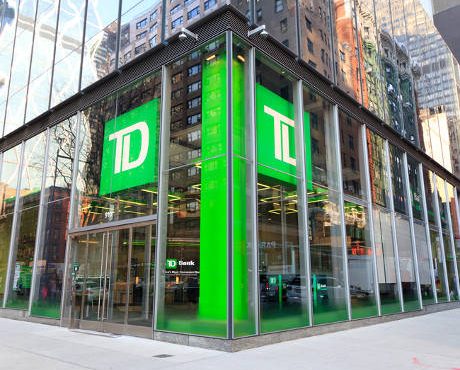TD Stock Is a Solid Dividend Pick
If you are looking for trading ideas, then Toronto-Dominion Bank (NYSE:TD) stock is not for you. As a bank with an over-$80-billion market cap, TD stock is not known for making big moves. Rather, the main reason why investors are attracted to this Canadian bank stock is its steadily growing dividends.
Right now, TD stock pays a quarterly dividend of CA$0.55 Canadian cents per share. Based on its current stock price, the bank has a handsome annual dividend yield of 3.81%. In the past 10 years, TD stock’s quarterly dividend rate has increased by 130%.
Canadian Banks Are Resilient
When it comes to income investing, you want to look beyond the current yield. Sometimes a stock’s yield is attractive simply because investors don’t believe its current payout is sustainable. And this extends to industries. For instance, there are quite a few stocks in the energy sector that have impressive yields. But if you look at their stock price over the past two years, you’d see that the increasing yield doesn’t come from rising dividends; rather, it’s due to a huge drop in the stock price.
TD stock is in the financial services industry, which is not exactly a place that brings back good memories. When even the biggest players could fail and cause major damage to the U.S. economy, is this really a good place to put your money in?
Well first of all, despite its substantial presence in the U.S., TD survived the last financial crisis. Moreover, during that period, TD stock did not cut its dividends, although many speculated that Canadian banks would follow their U.S. counterparts and reduce their payouts to investors.
There are many reasons why Canadian banks did not fail. For starters, there were tighter regulations in regards to giving out mortgages, and when a borrower does default, Canadian banks can go after assets other than the house alone.
But most notably, starting in the 19th century, Canada’s banking system was created as a system of large financial institutions. The size and diversification at these banks made them a lot more resilient than their U.S. counterparts.
Also Read:
Dividend-Paying Bank Stocks to Consider for Retirement
10 High-Dividend Bank Stocks to Invest Into in 2017
TD, for instance, is the sixth-largest bank in North America, with more than 80,000 employees in offices around the world. The company serves approximately 25-million customers through three segments: Canadian Retail, U.S. Retail, and Wholesale Banking. As of July 31, 2016, TD had CA$1.2 trillion in assets.
Another reason why TD stock stands out for income investors is its retail focus. In 2015, the bank generated 64% of its earnings from Canadian retail, 23% from U.S. retail, nine percent from wholesale, and four percent from TD Ameritrade. Put simply, 87% of TD stock’s earnings came from retail banking. (Source: “TD Bank Group Investor Presentation Q3 2016,” Toronto-Dominion Bank, August 25, 2016.)
Relying on retail instead of wholesale can be a good thing for a bank. Wholesale banking can be profitable with a small number of large accounts, but retail banking, on the other hand, involves setting up branch networks so it is a business with high barriers of entry. But because of the much larger and more diversified customer base, having a retail focus can make the bank more recession-proof than relying on a large wholesale business. The high entry costs in the retail banking industry also mean that there could be less competition from new entrants.
So, TD is a solid bank. But for TD stock to keep rewarding income investors with dividend hikes, the bank needs to grow its business. On that front, things look quite impressive.
In the third quarter of the bank’s fiscal 2016 which ended July 31st, revenue grew nine percent year-over-year to C$8.7 billion. Adjusted earnings came in at C$1.24 per share, a seven percent increase from the year-ago period. (Source: “TD Bank Group Reports Third Quarter 2016 Results,” Toronto-Dominion Bank, August 25, 2016.)
Of course, no bank is perfect. One of the concerns facing Canadian banks at the moment is the downturn in the energy sector. But TD seems to be in good shape. In the quarter, the bank’s oil and gas producers and services outstandings were reduced by CA$300 million and currently total less than one percent of total gross loans and acceptances. Moreover, 65% of TD’s undrawn oil and gas exposure is investment grade.
In the past five years, TD stock’s adjusted earnings per share grew at a compound annual growth rate (CAGR) of 7.7%. Going forward, the bank is targeting a seven-percent to-10% adjusted EPS growth over the medium term.
The Bottom Line on TD Stock
Due to the nature of the bank’s business, TD stock is probably not going to shoot through the roof anytime soon. But with solid growth in its top and bottom line, the bank should be able to provide a growing stream of dividends in the years to come. And that is exactly what income investors are looking for.
